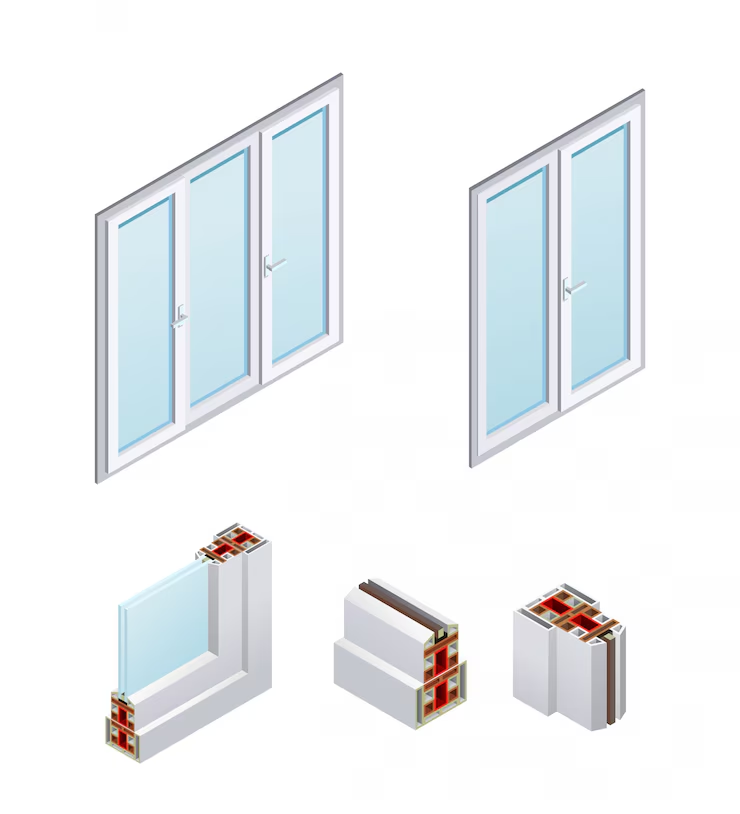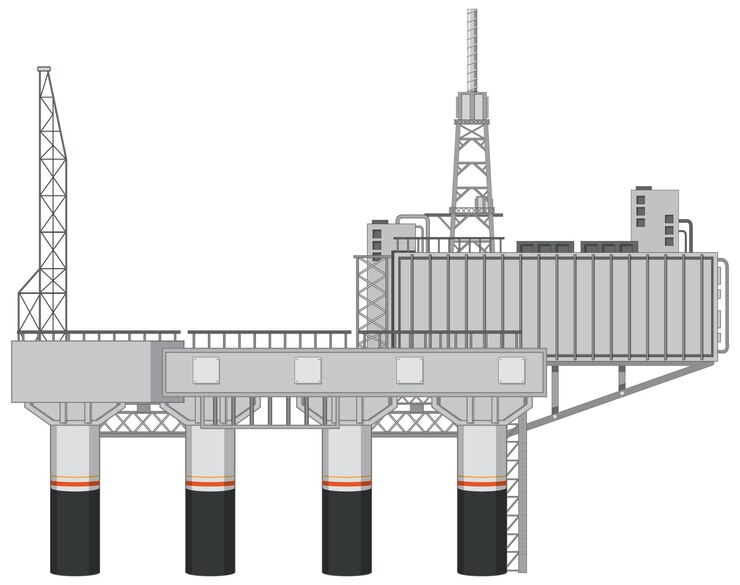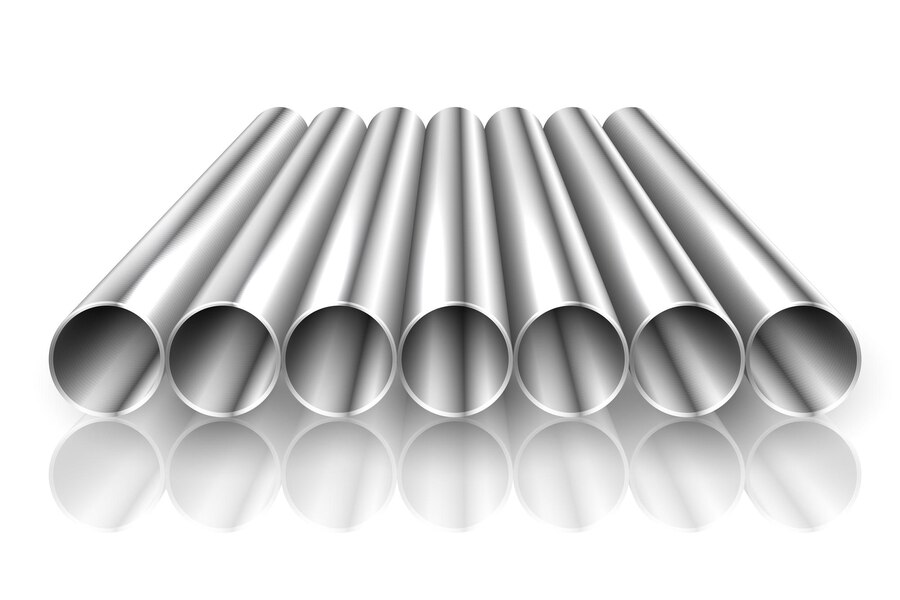Key Takeaways
- Aluminum products in India are generally subject to a GST rate ranging from 12% to 18%, depending on their form and use.
- HSN code 76071995 applies specifically to non-backed aluminum foil with a thickness not exceeding 0.2mm.
- HSN code 76042990 covers non-alloyed aluminum bars, rods, and profiles, crucial for correct product classification and taxation.
- Aluminum powder is classified under HSN code 76032000, important for global trade and ensuring accurate GST compliance.
- The broad categorization of aluminum under HSN code 7601 helps in distinguishing primary aluminum forms for trade and taxation.
The complexities of GST rates and HSN codes for household aluminum articles can be daunting. This guide aims to simplify the process, providing you with a comprehensive understanding of the HSN codes, GST rates, and their applications across various industries.
The HSN Code for Aluminium Scrap

The Harmonized System of Nomenclature (HSN) is an internationally standardized system of names and numbers to classify traded products. It’s crucial for determining GST rates and ensuring compliance.
| HSN Code | Description | Rate (%) | CESS (%) | Effective Date | Rate Revision |
|---|---|---|---|---|---|
| 7601 | Aluminium, not alloyed | 18% | 0% | 01-Jul-2017 | None |
| 7602 | Aluminium waste and scrap | 18% | 0% | 01-Jul-2017 | None |
| 7603 | Aluminium powders and flakes | 18% | 0% | 01-Jul-2017 | None |
| 7604 | Aluminium bars, rods and profiles | 18% | 0% | 01-Jul-2017 | None |
| 7605 | Aluminium wire | 18% | 0% | 01-Jul-2017 | None |
| 7606 | Aluminium plates, sheets, strip, and foil | 18% | 0% | 01-Jul-2017 | None |
| 7607 | Aluminium foil | 18% | 0% | 01-Jul-2017 | None |
| 7608 | Aluminium tubes and pipes | 18% | 0% | 01-Jul-2017 | None |
| 7609 | Aluminium tube or pipe fittings | 18% | 0% | 01-Jul-2017 | None |
| 7610 | Aluminium structures and parts | 18% | 0% | 01-Jul-2017 | None |
| 7611 | Aluminium reservoirs, tanks, vats | 18% | 0% | 01-Jul-2017 | None |
| 7612 | Aluminium casks, drums, cans, boxes, etc. | 18% | 0% | 01-Jul-2017 | None |
| 7613 | Aluminium containers for compressed gas | 18% | 0% | 01-Jul-2017 | None |
| 7614 | Aluminium stranded wire, cables, etc. | 18% | 0% | 01-Jul-2017 | None |
| 7615 | Aluminium table, kitchen, and household articles | 12% | 0% | 01-Jul-2017 | None |
| 7616 | Other articles of aluminium | 18% | 0% | 01-Jul-2017 | None |
This table provides a detailed look at the various HSN codes associated with aluminium products, their respective GST rates, any applicable CESS, and their effective dates. The table covers a range of aluminium products, from scrap to household articles, highlighting the different rate of tax implications for each.
Specific HSN Codes for Aluminium Scrap
Aluminium scrap falls under the HSN code 7602, which covers aluminium waste and scrap. This classification is essential for proper tax filing and compliance.
| HSN Code | Description | Rate (%) | CESS (%) | Effective Date | Rate Revision |
|---|---|---|---|---|---|
| 7602 | Aluminium Waste And Scrap | 18 | 0 | 01/07/2017 | 18% |
| 760200 | Aluminium Waste And Scrap | 18 | 0 | 01/07/2017 | 18% |
| 76020010 | Aluminium Waste And Scrap: Aluminium Scrap, including clean aluminium lithographic sheets, new, mixed low copper aluminium clippings and solids, clean mixed old | 18 | 0 | 01/07/2017 | 18% |
| 76020090 | Aluminium Waste And Scrap: Other Waste And Scrap | 18 | 0 | 01/07/2017 | 18% |
Aluminium Scrap HSN Code & GST Rate
Aluminium Scrap GST Rate
- Aluminium scrap is subject to a GST of 18%. This rate applies to all forms of aluminium waste and scrap, whether sourced from manufacturing waste, used aluminium products, or other scrap sources.
Input Tax Credit (ITC)
- Businesses dealing in aluminium scrap can avail themselves of the Input Tax Credit (ITC). This facility allows businesses to deduct the amount of GST paid on inputs (like raw materials and services) from the GST due on sales. The ability to claim ITC is a significant benefit as it lowers the overall tax burden on the entity.
Documentation and Compliance
- Proper documentation is essential for availing of ITC and complying with GST regulations. Businesses must maintain detailed records of purchases and sales of scrap, including GST invoices, which specify the HSN code and the GST charged. This documentation helps in the accurate filing of GST returns and in the case of audits by tax authorities.
Reverse Charge Mechanism (RCM)
- The Reverse Charge Mechanism (RCM) may apply to transactions involving aluminium scrap. Under RCM, the buyer of the scrap is responsible for the payment of GST if the supplier is unregistered under GST. This mechanism ensures that the government collects tax at every point of sale, even if the seller is not directly registered under GST.
Impact of Misclassification
- Correct classification under the HSN code 7602 is critical. Misclassification can lead to incorrect GST charges, resulting in penalties and interest during tax audits. Businesses must ensure that the aluminium scrap is accurately classified to avoid such issues.
Exports and GST
- Export of aluminium scrap is treated as a zero-rated supply under GST, meaning exporters can ship aluminium scrap without paying GST on such exports. They can also claim a refund for the input tax credit on the inputs used to gather or process the scrap, further reducing the cost burden.
Strategic Considerations for Businesses
Businesses engaged in the trading or recycling of aluminium scrap must consider the following strategies to optimize their tax positions:
- Regular Training: Conduct regular training for finance and accounting teams on updates in GST rates and compliance requirements.
- Tax Consultation: Engage with tax consultants specializing in GST to ensure proper compliance, especially in classification and claiming ITC.
- Leverage Technology: Implement robust accounting and inventory management systems that can accurately track transactions, classify goods under correct HSN codes, and generate compliant invoices.
- Review Supply Chains: Evaluate supply chains to ensure that all suppliers are GST-compliant, minimizing the risk associated with the Reverse Charge Mechanism.
GST on Supply of Aluminium Windows or Doors and Installation

The supply and installation of aluminium windows and doors are significant aspects of the construction and building materials industry.
Understanding the GST implications for these services is essential for businesses to manage costs effectively and ensure compliance with tax laws. Here’s a detailed overview:
GST Rate for Aluminium Windows and Doors
- The standard GST rate for aluminium windows and doors is 18%. This rate applies to both the materials and the installation services if provided as a single contract. The 18% GST is charged on the total contract value, which includes the cost of aluminium, other materials, and labor charges for installation.
HSN Codes
- Aluminium windows and doors are classified under the HSN (Harmonized System of Nomenclature) code 7610. This code is used to categorize aluminium structures, including prefabricated buildings made from aluminium.
Input Tax Credit (ITC)
- Businesses can avail of Input Tax Credit (ITC) for the GST paid on inputs used in the fabrication and installation of aluminium windows and doors. This includes the aluminium itself, any other materials used, and services such as transportation and labor. Claiming ITC can significantly reduce the cost burden on the business by offsetting this input GST against their output tax liability.
Place of Supply
- The place of supply for the installation of aluminium windows and doors will generally be the location where the property is situated. This determines which state’s GST rate applies in cases where inter-state supply occurs.
Impact of Inaccurate Classification
- Accurate classification of goods under the correct HSN code is crucial. Inaccurate classification can lead to wrong GST rates being applied, which might result in penalties and interest during GST audits. Businesses must ensure that they classify their products correctly to avoid such issues.
Reverse Charge Mechanism
- The Reverse Charge Mechanism (RCM) does not generally apply to the supply of aluminium windows or doors unless the supplier is an unregistered dealer and the purchaser is registered. In such cases, the purchaser becomes responsible for paying the GST directly to the government.
Documentation and Compliance
- Proper documentation is vital for GST compliance. This includes maintaining detailed invoices that list the HSN code, description of goods, quantity, total value, GST charged, and other pertinent information. These documents are crucial for both claiming ITC and for compliance during GST audits.
Installation Services
- When installation services are billed separately, they are also subject to a GST rate of 18%. However, if the installation is part of a single composite supply of aluminium windows or doors, the entire supply is treated as a supply of goods, attracting an 18% GST.
GST Amount and Rate on Aluminium Utensils
Aluminium utensils are an integral part of everyday kitchen use in many households and commercial settings. Knowing the GST implications for these items is essential for manufacturers, retailers, and consumers alike.

Here’s a detailed examination of the GST rates applied to aluminium utensils and the financial impact of these rates.
GST Rate for Aluminium Utensils
- The Goods and Services Tax (GST) rate for aluminium utensils is currently set at 12%. This rate includes all types of aluminium utensils such as pots, pans, kettles, and other cooking and serving tools made primarily from aluminium.
HSN Code
- Aluminium utensils fall under HSN code 7615. This code is specifically used for table, kitchen, or other household articles made of aluminium, and parts thereof, whether or not lined or heat-insulated.
Input Tax Credit (ITC)
- Businesses involved in the production or sale of aluminium utensils can claim Input Tax Credit (ITC) for the GST paid on their raw materials and inputs. This includes the GST paid on aluminium metal, machinery, and other materials used in the production of these utensils. Claiming ITC helps reduce the tax liability on the output, thereby decreasing the overall cost burden.
Impact on Pricing
- The application of a 12% GST affects the pricing of aluminium utensils. Manufacturers and retailers need to incorporate this tax rate into their pricing strategies to ensure they cover costs and maintain profitability while being competitive in the market.
Documentation for Compliance
- Proper documentation is crucial for compliance with GST regulations. This includes maintaining detailed invoices that list the HSN code, description of the utensils, quantity, total value, GST charged, and other relevant information. These documents are necessary for accurate GST filings and audits.
Exemptions and Concessions
- Currently, there are no specific exemptions or concessions for aluminium utensils under the GST regime. All products under HSN code 7615 are uniformly subjected to the 12% rate
Explore the World of Aluminium and Its Products
Aluminium’s versatility is showcased in its wide use across multiple industries due to its lightweight and corrosion-resistant properties. Below is a tabulated overview of the applications of aluminium products in various sectors along with their respective Harmonized System of Nomenclature (HSN) codes and GST rates.
| Industry | Application | HSN Code | GST Rate |
|---|---|---|---|
| Construction | |||
| Structural Components | Various | Varies | |
| Facades and Cladding | 7610 | 18% | |
| Windows and Doors | 7610 | 18% | |
| Transportation | |||
| Automotive Industry Components | Various | 18% | |
| Aerospace Industry Components | Various | 18% | |
| Packaging | |||
| Beverage Cans | 7612 | 18% | |
| Foil Packaging | 7607 | 18% | |
| Electrical Manufacturing | |||
| Wiring and Conductors | 7605 | 18% | |
| Heat Sinks | 7616 | 18% | |
| General Aluminium Products | |||
| Profiles | 7604 | 18% | |
| Wire | 7605 | 18% | |
| Plates, Sheets, Strip, and Foil | 7606 | 18% | |
| Tubes and Pipes | 7608 | 18% | |
| Aluminium Structures | 7610 | 18% |
Key Points:
- HSN Variability: The HSN codes vary based on specific aluminium products, affecting the GST rates applied. For structural components in construction, the HSN codes can vary, and so can the GST rates depending on specific applications.
- Uniform GST Rates in Certain Sectors: For industries like transportation, packaging, and electrical manufacturing, the GST rate is generally uniform at 18%. This simplifies tax calculations for businesses operating within these sectors.
- Impact of GST on Pricing and Compliance: Understanding these GST rates is crucial for businesses to accurately price their products and remain compliant with tax regulations. It also assists in claiming the appropriate Input Tax Credit (ITC) which can significantly impact the cost structures and profitability of businesses involved in the production and trade of aluminium-based products.
Impact of GST Rate on Aluminium Structures
Aluminium structures, a significant category in the construction and architectural industries, are influenced by the GST regime in India. Knowing the impact of GST rates on aluminium structures can help businesses navigate cost implications and tax compliance effectively. Here’s a detailed analysis:
GST Rate for Aluminium Structures
- Aluminium structures are generally classified under HSN code 7610. The standard GST rate applied to aluminium structures is 18%. This rate encompasses a variety of products, including but not limited to aluminium doors, windows, frames, and scaffolding.
Effect on Cost
- The GST rate of 18% on aluminium structures directly affects the cost structure of construction projects. Businesses need to factor this tax into their budgeting and pricing strategies. The addition of GST can increase the upfront cost, but it also allows businesses to claim Input Tax Credit (ITC), which can offset the GST paid on inputs like raw materials and services.
Input Tax Credit (ITC)
- The availability of ITC is a significant benefit under the GST system. Companies involved in the manufacturing or construction of aluminium structures can claim ITC on the GST paid on their inputs. This includes everything from the aluminium itself to related services such as installation. Effectively utilizing ITC can reduce the overall cost burden and improve cash flow for businesses.
Compliance and Documentation
- Adhering to GST compliance is crucial for businesses dealing with aluminium structures. This includes maintaining detailed invoices that specify the HSN code, GST rate, and other relevant transaction details. Proper documentation supports the claim of ITC and ensures smooth compliance with GST audits.
Market Impact
- The GST rate also influences market pricing strategies. Since the rate is uniformly applied across India, it creates a level playing field for all manufacturers and suppliers of aluminium structures. However, businesses must stay competitive by managing their input costs and optimizing the ITC benefits to maintain or improve profit margins.
Sector-Specific Implications
- In sectors like real estate and infrastructure, where aluminium structures are extensively used, the GST rate impacts budgeting and financial planning. Project costs must be recalculated to include GST, which can affect overall project feasibility and financing.
Benefits of HSN Code for Aluminium Structures
The use of the Harmonized System of Nomenclature (HSN) code for aluminium structures provides several benefits for businesses involved in their manufacture, trade, and use.

Understanding these benefits can help businesses optimize their operations and ensure compliance with tax regulations. Here’s a look at the key advantages:
Simplified Taxation
- Uniformity: HSN codes standardize the classification of goods globally, including aluminium structures. This uniformity simplifies the taxation process, making it easier for businesses to determine the applicable taxes.
- GST Compliance: Using the correct HSN code, such as 7610 for aluminium structures, ensures compliance with GST regulations. It helps in accurate tax filing, reducing the likelihood of errors and potential penalties.
Facilitation of Trade
- International Trade: HSN codes are recognized internationally. This recognition facilitates smoother import and export processes by providing a common language for countries to discuss and regulate trade tariffs and restrictions.
- Customs Clearance: Correct HSN coding speeds up customs procedures, as the codes help customs officials quickly identify the nature of the goods and apply the appropriate tariffs and regulations.
Efficient Tax Administration
- Streamlined Audits: Accurate use of HSN codes allows for more efficient tax audits. Tax authorities can easily verify compliance with tax regulations based on the HSN codes reported.
- Improved Data Analysis: Governments and economic analysts use HSN code data to track economic activity. This data helps in forming industry-specific policies and understanding market trends.
Financial Management
- Input Tax Credit (ITC) Claims: Businesses can claim ITC on GST paid on inputs if they use accurate HSN codes in their invoices. This can significantly reduce the cost of materials and services related to aluminium structures.
- Cost Prediction and Management: Knowing the GST implications through HSN codes helps businesses in budgeting and financial planning. They can predict the tax liabilities associated with different materials and services, aiding in more accurate cost management.
Enhanced Transparency
- Clear Product Identification: HSN codes provide a clear description of products. This clarity can reduce disputes between buyers and sellers regarding product specifications and the corresponding tax rates.
- Consumer Trust: Businesses that accurately classify their products using HSN codes can enhance trust with consumers and partners by ensuring transparency in billing and tax calculations.
Challenges in Determining the Applicable GST Rate for Aluminium Structures
Determining the correct Goods and Services Tax (GST) rate for aluminium structures can present several challenges for businesses. These complexities arise due to the varied nature of products and their uses within the aluminium industry. Here’s an overview of the key challenges:
Varied Product Classifications
- Broad Product Range: Aluminium structures encompass a wide range of products, from simple aluminium panels to complex architectural features. Each type of product might fall under different HSN codes, which complicates the process of determining the correct GST rate.
- Overlap in Categories: Some aluminium products can be classified under multiple HSN codes depending on their specific use or characteristics, leading to uncertainty about the correct GST rate to apply.
Complex Tax Regulations
- Frequent Changes in GST Laws: GST rates and regulations can change frequently, which may lead to confusion and the need for businesses to continuously update their compliance processes.
- Interpretation of Tax Laws: The interpretation of tax laws regarding aluminium structures can vary, which might result in discrepancies in GST application across different jurisdictions or scenarios.
Compliance and Documentation
- Accurate Invoicing: Ensuring that invoices accurately reflect the correct HSN code and GST rate for aluminium structures is crucial. Mistakes in invoicing can lead to non-compliance and penalties during audits.
- Record Keeping: Maintaining comprehensive records that support the chosen HSN code and GST rate is essential but can be challenging, especially for businesses dealing with a large variety of products.
Conclusion
Having knowledge of GST rates and HSN codes for aluminium products is essential for compliance and accurate tax filing. These classifications not only facilitate accurate tax compliance but also streamline international trade processes.
This meticulous classification aids in proper tax filing, reduces compliance risks, and ensures that businesses can leverage tax credits effectively, enhancing operational efficiency in the aluminum industry.
💡Facing delays in GST payment? Get started with PICE today and streamline your GST payments. Click here to sign up and take the first step towards hassle-free GST management.
FAQs
Can you clarify the GST rate applicable to aluminum products in India?
The GST rate for aluminum products in India typically ranges between 12% and 18%, depending on the type of product. For instance, primary forms of aluminum like ingots and billets usually attract an 18% rate, while aluminum utensils are taxed at a lower rate of 12%.
What does HSN code 76071995 represent in the context of aluminum goods?
HSN code 76071995 specifically relates to aluminum foil that is not backed and has a thickness not exceeding 0.2mm, excluding any support. This code helps in categorizing aluminum products for taxation and facilitates international trade by standardizing product descriptions.
Could you explain the HSN code 76042990 and its relevance to the aluminum industry?
HSN code 76042990 pertains to aluminum bars, rods, and profiles that are not alloyed. This code is crucial for the aluminum industry as it helps manufacturers and traders classify their products correctly for tax purposes, ensuring compliance and accurate tax filings.
What HSN code is assigned to Aluminium powder, and why is it important?
Aluminum powder is assigned the HSN code 76032000. This classification is important because it helps in identifying the product in the global trade market and ensures the correct GST rate is applied, facilitating compliance with tax regulations.
What is HSN code of aluminium?
The broad HSN code for aluminum in primary forms, such as ingots or billets, is generally classified under 7601. This code is essential for distinguishing primary aluminum products in trade and taxation documents.
What is the HS code for aluminium item?
The HS code for an aluminum item can vary depending on its specific form and use but generally falls under the 7600 series. For example, aluminum sheets and plates are classified under 7606, while aluminum foil is under 7607.
What is the GST rate for aluminium?
The GST rate for aluminum varies: it’s generally 18% for raw forms like ingots, bars, and rods. However, for finished goods such as aluminum foil and kitchen utensils, the rate might be lower, at around 12% to 18%, reflecting the different uses and processing stages of the products.








